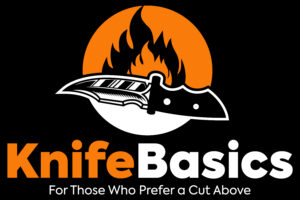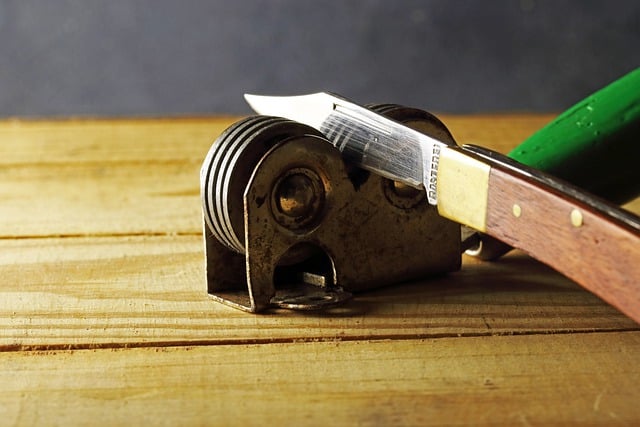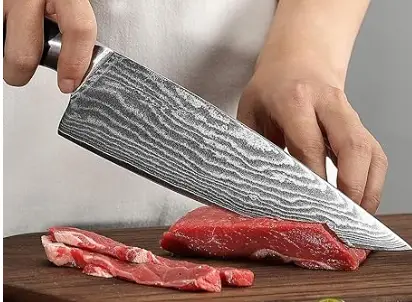O1 steel is oil-hardening steel under the “O” family. It is among the oldest steel types on the market; it has been used since 1905 and remains among the top tool steels to date. The O in the name stands for oil hardening, while the 1 means it came before other steels in the O family.
O1 offers excellent edge retention and wear resistance, making it suitable for tool production. Another unique feature of this steel is that it is among the original steel types that need oil quenching and is used when other steels are not hard enough.
O1 steel is mainly used to make survival knives, hunting knives, industrial knives, gauges, and measuring tools.
O1 steel composition
- Carbon C 1.00%: Increases the edge retention, hardness and tensile strength. It also improves steel resistance to wear, abrasion and corrosion.
- Chromium Cr 0.60%: Increases hardness, and corrosion resistance of the blade.
- Tungsten W 0.60%: It improves hardeness of O1 steel at high temperature.
- Vanadium V 0.30%: Increase wear resistance and toughness, it also improves corrosion resistance. Vanadium acts by improving the grain structure and the carbide structure of the steel.
- Nickel Ni 0.30%: Increases the toughness of O1 Steel.
- Manganese Mn 1.40%: Increases Hardness and improves machinability.
- Silicon Si 0.50%: Increases strength and heat resistance.
- Phosphorus P 0.03%: Improves machinability and hardness.
- Sulfur S 0.03%: Improves machinability.
Properties of O1 steel
O1 Steel Hardness
O1 steel hardness ranges from 57-62HRC depending on the heat treatment used. Samples with hardness levels of 57HRC are suitable for making EDC knives, while harder samples with 62HRC manufacture blades meant for tough applications like hunting and camping knives.
O1 Steel Machinability
One of the main reasons knife makers like this steel is that it is easy to work with. They do not spend a lot of time, money or effort to create products from O1.
As the production cost reduces, the consumers benefit because products made from this steel are affordable. If you are looking for quality, affordable knives, halt your search and head over to purchase O1 knives.
O1 Steel Edge retention
O1 remains sharp for a long. Knives made from this steel relieve you from the burden of frequent sharpening. This is another reason why it is used in making outdoor knives because it can cut through items that would dull other steel types without getting blunt.
O1 Steel Toughness
Most hard steels are brittle, and you probably expect the same from O1. However, it offers outstanding toughness. O1 knives have proven tough against chipping or breaking when subjected to pressure and force. This property makes it suitable for survival knives because it can handle any application without the worry of breaking or chipping.
O1 Steel Wear resistance
Another area of excellence of this steel is in its wear resistance abilities. Good wear resistance is among the properties used when determining whether steel is suitable for knives, and O1 passes the test.
Good wear resistance is associated with a combination of carbon and manganese in its composition. O1 knives remain in perfect shape even after years of hard work.
O1 Steel Corrosion resistance
Does O1 steel rust? O1 steel fails in corrosion resistance because it contains low amounts of chromium. For this reason, O1 knives require proper care and maintenance otherwise they will easily rust.
If you neglect this steel, you can quickly lose it to rust, and you will have no one to blame because the warning is out there. Please do not use the knife in wet conditions often and when you do, make sure to wipe it dry and apply a coat of oil before storage.
O1 Steel Ease of Sharpening
This steel is very easy to sharpen, irrespective of your sharpening skills or the tools you are using. As indicated earlier, it holds an edge for a long time. Therefore, you will not be stressing about knives becoming dull faster or the burden of sharpening. What a perfect combination!
O1 steel vs other steels
A2 vs O1 steel
O1 is easier to sharpen and attains a sharp edge faster than A2 steel. On the other hand, A2 beats its counterpart in corrosion resistance, hardness and toughness. On similarities, both steel types offer the same level of edge retention.
O1 vs D2
O1 beats D2 tool steel in toughness, and it is easier to sharpen. While D2 shines in edge retention, wear resistance and corrosion resistance.
Is O1 Tool Steel Good for Knives?
O1 Steel is a good steel for knives with great qualities like high hardness, and toughness. The low chromium content of this type of steel means that it will easily rust if not properly cared for; however, the edge retention and wear resistance make it an excellent choice in tool production or as a knife blade material.
If you’re looking to purchase one of these blades but are worried about corrosion, be sure to look for stainless-steel alternatives such as S30V or 440C which have higher levels of chromium than O1.


